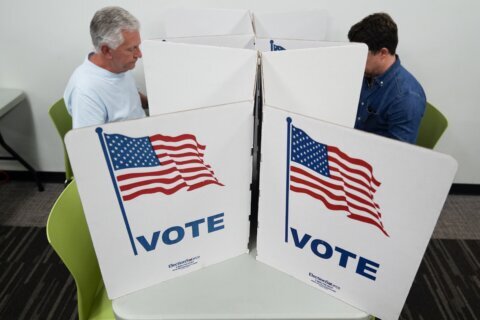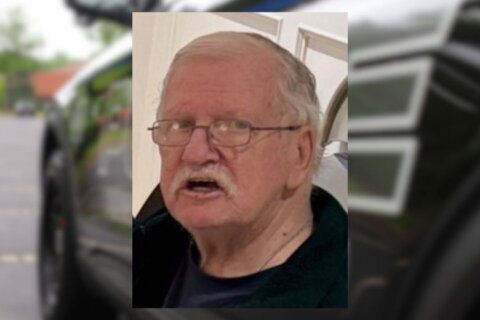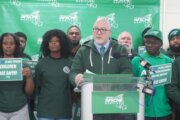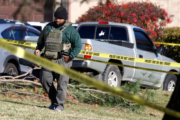This video is no longer available.
There are times when a doctor is happy to see the last of their patient. That was the case at Manassas National Battlefield Park in Virginia last weekend, when staff from the Blue Ridge Wildlife Center released a great horned owl that had been in their care.
Dr. Jen Riley, director of the hospital at Blueridge Wildlife Center, told WTOP that the injured bird was found at the national park by a park ranger in mid-November.
“Nobody knows what happened,” she said, but it’s likely the raptor was hit by a car. “But we can’t say for sure.”
Examination showed that the owl had suffered multiple fractures to bones that allow it to fly. The metacarpal fractures, Riley said, are like “part of the hand, if you’re comparing it to a human,” and in this case, the owl’s primary flight feathers come off those sections of the wing.
“So basically, multiple hand bones were broken in multiple places,” she said.
Riley said the quick action of the park ranger was critical to allowing the bird to recover.
“The fact that this owl was able to get in to us quickly and was stable for surgery the next day is what saved it,” Riley said.
The challenge with great horned owls, she said, is their size — they are among the biggest owls in North America — their strength and their general feistiness.
Handling the big birds can be tricky in the best of circumstances, Riley said. They have extremely sharp talons and powerful feet that can exert hundreds of pounds of pressure per square inch.
“Great horns tend to be both grabby and bite-y,” she said.
The care of raptors, but especially great horned owls, is left to experienced staff at Blueridge Wildlife Center.
Interns don’t handle them, because, according to Riley, “They are very dangerous. Even once you have the feet, which is the main weapon for raptors, these guys do like to bite as well.” And because they are able to turn their heads up to 270 degrees, “You really have to have good control over the feet and head to work with them safely.”
The owl underwent surgery that outfitted the bird with external “fixators” to hold the wing in place so it could heal. The new additions to its wing were not appreciated by the owl, Riley said.
“Great horns are extremely strong and they’re kind of known for pulling these metal fixators out,” she said. “You can’t just tell them not to touch it.”
In this case, the owl maintained a good appetite and quickly recovered its ability to fly.
When the time to release the owl came, it was decided to return it to Manassas National Battlefield Park. Riley said no matter what the species of wild animal, the typical practice is to release them close to where they were found.
“So in this case, we had the benefit of having a visitors’ center and a parking lot in the same location where he was found. We were able to have people come out and actually watch the release,” she said.
Get breaking news and daily headlines delivered to your email inbox by signing up here.
© 2024 WTOP. All Rights Reserved. This website is not intended for users located within the European Economic Area.








